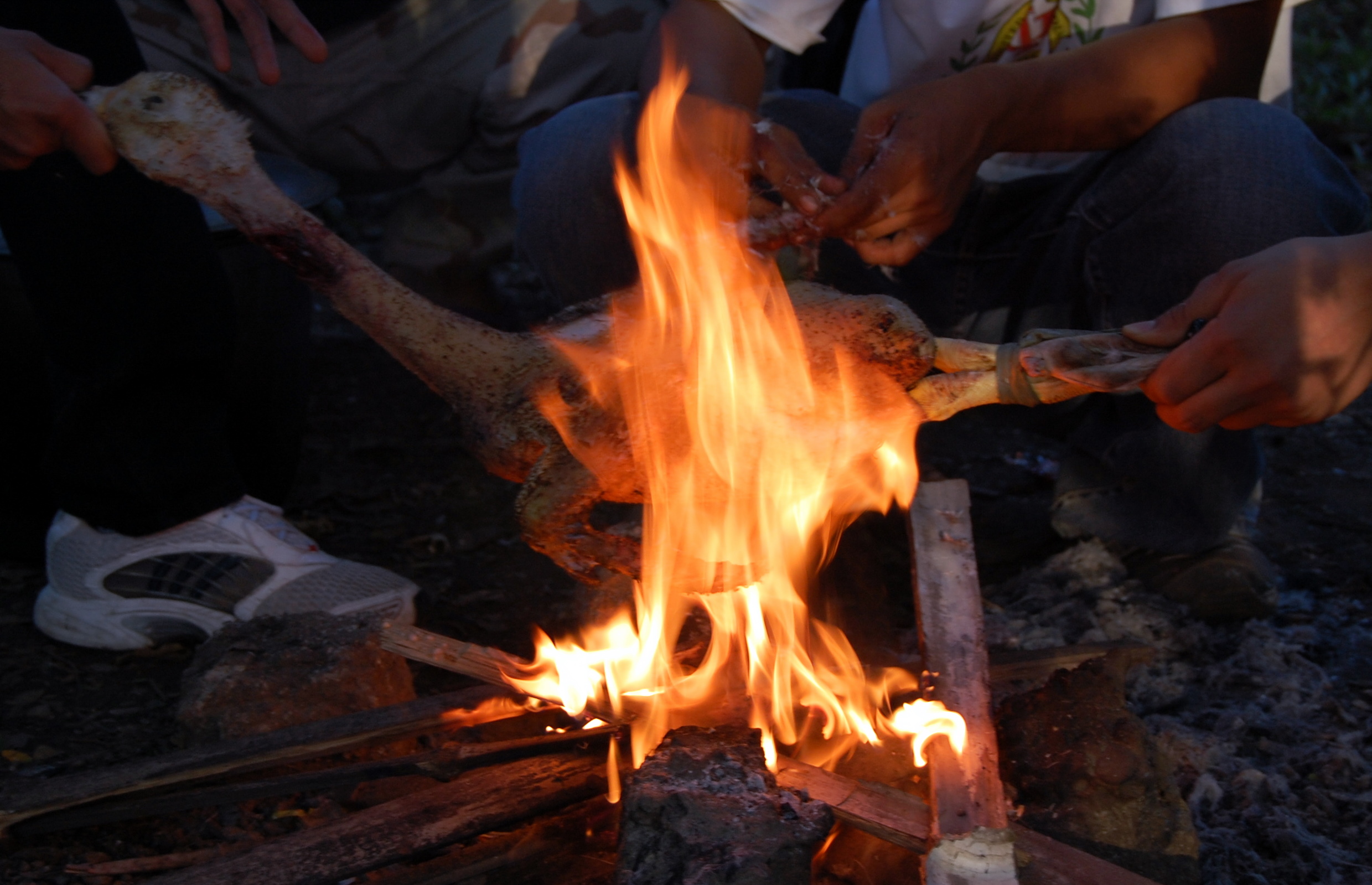|
Cañao
Cañao or Kanyaw is a festival or a ceremony of the indigenous mountain people of Northern Luzon. It is a socio-religious ritual where chickens, pigs and/or carabaos are butchered as a sacrifice and feasted on. This is usually a thanksgiving to their god ''Kabunyan''. These indigenous mountain people believe in the existence of supernatural beings that they call ''Anito'' which have power over man. With the use of prayers and material offerings in the ritual, the people believes to win the favors of these spirits. The festival was an ancient tradition celebrated long before Spain reached the Philippines. Today, Igorots and Filipino of Igorot ancestry a still practice this traditional feast wherever they are. Grand Cañao is celebrated by the Igorot people of the Cordilleras yearly Practice There are different kinds of rituals of Cañao. Such rituals are: ''for illness'', ''good harvest'' and for ''progress''. It is a festival, a liturgy and offering where animals are offered ... [...More Info...] [...Related Items...] OR: [Wikipedia] [Google] [Baidu] |
Igorot People
The indigenous peoples of the Cordillera Mountain Range of northern Luzon, Philippines are often referred to using the exonym Igorot people, or more recently, as the Cordilleran peoples. There are nine main ethnolinguistic groups whose domains are in the Cordillera Mountain Range, altogether numbering about 1.5 million people in the early 21st century. Their languages belong to the northern Luzon subgroup of Philippine languages, which in turn belongs to the Austronesian (Malayo-Polynesian) family. These ethnic groups keep or have kept until recently their traditional religion and way of life. Some live in the tropical forests of the foothills, but most live in rugged grassland and pine forest zones higher up. Etymology From the root word ''golot'', which means "mountain," ''Igolot'' means "people from the mountains", a reference to any of various ethnic groups in the mountains of northern Luzon. During the Spanish colonial era, the term was variously recorded as ''Igolot'', ... [...More Info...] [...Related Items...] OR: [Wikipedia] [Google] [Baidu] |
Luzon
Luzon (; ) is the largest and most populous island in the Philippines. Located in the northern portion of the Philippines archipelago, it is the economic and political center of the nation, being home to the country's capital city, Manila, as well as Quezon City, the country's most populous city. With a population of 64 million , it contains 52.5% of the country's total population and is the fourth most populous island in the world. It is the 15th largest island in the world by land area. ''Luzon'' may also refer to one of the three primary island groups in the country. In this usage, it includes the Luzon mainland, the Batanes and Babuyan groups of islands to the north, Polillo Islands to the east, and the outlying islands of Catanduanes, Marinduque and Mindoro, among others, to the south. The islands of Masbate, Palawan and Romblon are also included, although these three are sometimes grouped with another of the island groups, the Visayas. Etymology The name ''Luz ... [...More Info...] [...Related Items...] OR: [Wikipedia] [Google] [Baidu] |
Cordilleras
A cordillera is an extensive chain and/or network system of mountain ranges, such as those in the west coast of the Americas. The term is borrowed from Spanish, where the word comes from , a diminutive of ('rope'). The term is most commonly used in physical geography p. 687 (Encyclopedia Americana Corp., 1918): "It is used particularly in physical geography, although in geology also it is sometimes applied...." and is particularly applied to the various large |
Tapuy
''Tapuy'', also spelled ''tapuey'' or ''tapey'', is a rice wine produced in the Philippines. It is a traditional beverage originated from Banaue and the Mountain Province, where it is used for important occasions such as weddings, rice harvesting ceremonies, fiestas and cultural fairs. It is produced from either pure glutinous rice or a combination of glutinous and non-glutinous rice together with ', an Ifugao word, can refer to both ''Bidens pilosa'' (ahere and '' Cosmos caudatus'' (ahere. roots, ginger extract, and a powdered starter culture locally known as ''bubod''.''Tapuy Cookbook & Cocktails'', Philippine Rice Research Institute (2011) ''Tapuy'' is an Ilocano name. The wine is more commonly called ''baya'' or ''bayah'' in Igorot languages. Etymology ''Tapuy'' is derived from Proto-Malayo-Polynesian *tapay ("fermented ood), which in turn is derived from Proto-Austronesian * ("fermented ood). Derived cognates has come to refer to a wide variety of fermented food throughout ... [...More Info...] [...Related Items...] OR: [Wikipedia] [Google] [Baidu] |
Pinikpikan
Pinikpikan is a dish from the mountains of the Cordillera region in the Philippines.The Ritual Preparation of the Pinikpikan gobaguio.com Specifically, pinikpikan is a tradition of the tribe. Pinikpikan is prepared by beating a live with a stick prior to cooking. The beating bruises the chicken's flesh by bringing blood to its surface, which is said to improve the flavour after cooking. The act of beating the chicken, while done in preparation of the dish, violates the [...More Info...] [...Related Items...] OR: [Wikipedia] [Google] [Baidu] |

